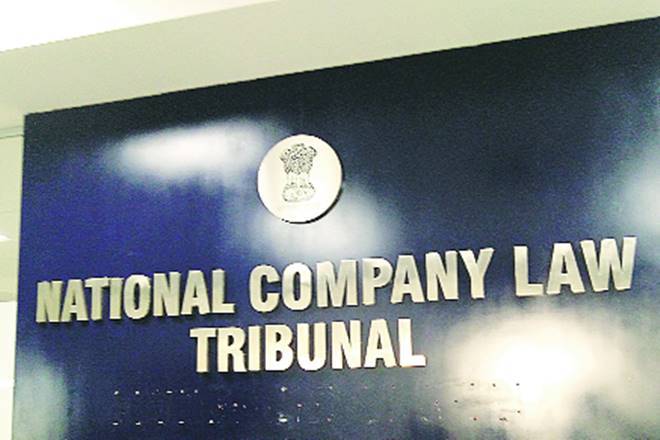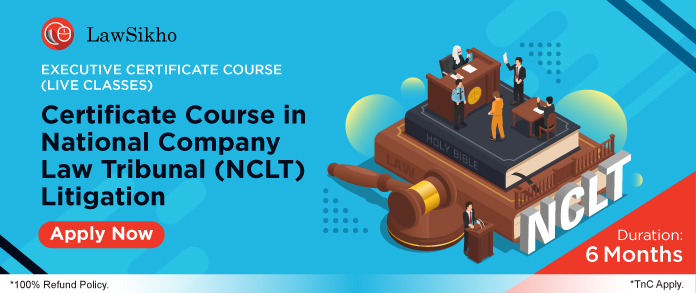This article is written by Amarpal Singh who is pursuing a Certificate Course in National Company Law Tribunal (NCLT) Litigation from LawSikho. This article covers the jurisdiction of NCLT to hear & decide avoidance application after the approval of the resolution plan.
Table of Contents
Introduction
According to Regulation 35A of the Insolvency and Bankruptcy (Insolvency Process for Corporate Persons), Regulations, 2016 (hereinafter referred to as CIRP Regulations), during the corporate insolvency resolution process (hereinafter referred to as CIRP), the resolution professional (hereinafter referred to as RP) has a duty to look back and identify the following transactions including preferential, undervalued, extortionate and fraudulent transactions. If the RP is of the opinion that the corporate debtor had entered into any of the transactions stated above, he has to decide to that effect and place it before the insolvency board.
After making the determination, the RP has to file an application before the National Company Law Tribunal (hereinafter NCLT) for appropriate relief and avoidance of the same. In the case of Venus Recruiters Private Limited v. Union of India & Ors., the question arose before the Delhi High Court that “whether the NCLT has jurisdiction to adjudicate application filed under section 43 of IBC for the avoidance of preferential transaction after the approval of resolution plan?”
This article aims to provide an analysis of the judgment in the above-mentioned case.
Facts of the Case
State Bank of India had initiated CIRP against Bhushan Steel Ltd. (now known as Tata Steel BSL Limited) (hereinafter referred to as Corporate Debtor). An interim resolution professional (hereinafter referred to as IRP) was appointed on the same date when the CIRP was initiated. The IRP made a public announcement in accordance with section 15 of IBC for inviting submission of claims against the Corporate Debtor. Thereafter, the Committee of Creditors (hereinafter referred to as COC) was constituted and in the first meeting of COC, IRP was confirmed as RP for the Corporate Debtor.
Subsequently, a resolution plan was submitted by Tata Steel. The COC approved the resolution plan submitted by Tata Steel, and the RP submitted the resolution plan to NCLT for its approval. While the resolution plan was pending before the NCLT for its approval, RP filed an avoidance application under section 25(2)(j), section 43 to 51, and section 66 of IBC. There were various transactions in the avoidance application which were labeled as suspect transactions. The suspect transaction arose in the forensic audit report filed by the forensic consultant which was also attached to the application.
The NCLT approved the resolution plan, five weeks after the avoidance application was filed before the NCLT. In the judgment, NCLT passed various orders and directions. However, it did not pass any order with respect to the pending avoidance application. The final order contained a line which is stated as follows- “That all the others applications are also disposed off”. Consequently, the avoidance application which was filed by the RP was neither heard nor decided on merits. The resolution plan was also approved by the National Company Law Appellate Tribunal (hereinafter referred as NCLAT). After the resolution plan was passed, the NCLT passed a separate order in the avoidance application impleading Venus Recruiters Private Limited (hereinafter Petitioner) as a party and issuing notice to it based on the fresh memo of parties filed by RP. The petitioner in the case challenged the impleading and notice by filing a writ petition before the Delhi High Court.
Issues
- Whether the RP can continue to act beyond the approved resolution plan?
- Whether the avoidance application filed under Section 43 of IBC can survive beyond the conclusion of CIRP?
- Whether NCLT has jurisdiction to hear avoidance applications after the approval of the resolution plan?
Judgement
The Delhi High Court held that when the NCLT approves the resolution plan in accordance with section 31 of IBC, the RP has to forward all the records relating to CIRP, and the resolution plan to the board to be recorded on its database. This is where the role of RP comes to an end. The RP cannot continue to act beyond the approval of the resolution plan.
Section 43 and 44 of IBC read with Regulation 35A of the CIRP Regulations prescribes a timeline within which RP should examine the objectionable transactions and apply to the NCLT for appropriate relief. There is a purpose for prescribing the timeline, which is that the RP should include the details of these transactions in the resolution plan which is submitted to NCLT under section 30 of IBC. These details have to be made available to NCLT before approving the resolution plan under section 31 of IBC. Therefore, if the avoidance application relating to preferential and other transactions survive beyond the conclusion of CIRP, it will be against the scheme of IBC.
Further, it was held that after the conclusion of CIRP, the NCLT does not have jurisdiction to hear and decide the avoidance application filed under section 25(2)(j) of IBC. As the purpose of avoidance application is to benefit the creditors. There will be no benefit to the creditors if the avoidance application is heard and decided after the approval of the resolution plan.
Analysis
Adjudication of avoidance application is different from CIRP proceedings
Section 26 of IBC states that if an avoidance application is filed by the RP under section 25 IBC then it shall not affect the proceedings of CIRP. Thus, section 26 of IBC clarifies that adjudication of avoidance application is different from CIRP proceedings.
Discussion paper on Corporate Liquidation Process for Corporate persons along with Draft Regulation, 2016 published by IBBI on 27th April 2019 also states that application for recovery from vulnerable transactions meets tough resistance and litigation for a long period. Thus, an avoidance application should not affect the CIRP proceedings.
Further, the Report of the Insolvency Law Committee, 2020 in its report had recommended that the avoidance application filed by the RP may continue beyond the timeline of CIRP. Therefore, an avoidance application can survive beyond the conclusion of CIRP.
Timelines prescribed by IBC are directory in nature not mandatory
The Delhi High Court in the above judgement has stressed on the timeline prescribed by the IBC. However, in the case of P.T Rajan v. T.P.M Sahir & Ors. Supreme Court of India held that where a statutory functionary is asked to perform a statutory function within the prescribed timeline. The timeline will not be mandatory but directory.
Also, in the case of Surendra Trading Company v. Juggilal Kamlapat Jute Mill & Co. while dealing with the issue that the timeline prescribed for rejecting or admitting the application for initiation of CIRP is mandatory or not. The Supreme Court of India held that the object of the timelines prescribed under IBC is to expedite the proceedings but not to scuttle the same. Further, the court held that the process of justice can be hurried but not buried by prescribing the timelines. Therefore, the timelines prescribed for admitting and rejecting the application under IBC cannot be held to be mandatory.
Civil Courts do not have jurisdiction to adjudicate over the matters which fall under the realm of IBC
In the judgement, the Delhi High Court has stated that parties can exercise their civil and other remedies in terms of the contract between them. The NCLT cannot adjudicate on the preferential nature of transaction under a contract which stands terminated, as the new management has taken over the Corporate Debtor.
The above observation is contrary to the provisions of the IBC. Section 63 of the IBC states that no civil court shall have jurisdiction over the matter on which NCLT or NCLAT have jurisdiction under IBC. The jurisdiction to adjudicate over Preferential transaction is within the exclusive jurisdiction of NCLT. Thus, the civil court will not have jurisdiction to adjudicate over the preferential nature of the transaction which arose because of the insolvency proceedings against the corporate debtor.
Avoidance application is not meant to benefit the Corporate Debtor and COC
The view expressed by the Delhi High Court in the judgement as stated above that the corporate debtor, prior to the approval of the resolution plan will benefit from orders which can be passed under section 44 of IBC. The amount or any property which is transferred under the preferential transaction will form part of the final resolution plan. Further, the resolution plan will take into consideration the amounts which can be given to the corporate debtor for the benefit of COC. Thus, the corporate debtor will not benefit from the orders passed under section 44 of IBC after the resolution plan is approved by the NCLT.
In the case of Anuj Jain v. Axis Bank, it was held by the Supreme Court of India that the scheme of section 43 is to disregard the preferential transaction, restore the property which has been lost, remove any encumbrance which may have been created due to the preferential transaction. The object of the provision is to bring the corporate debtor on its wheels and in case of liquidation ensure pro-rate, equitable, and just distribution of assets.
Further, in the case, it was also held that the object of IBC and the provision is to maximize the value of assets of corporate persons and balancing the interest of all the stakeholders. Thus, the view taken by the Delhi High Court in the judgement is erroneous.
Conclusion
It can be concluded from the above analysis that the decision of the Delhi High Court in the case of Venus Recruiter Private Ltd. v. Union of India & Ors. is erroneous. The Delhi High Court has misconstrued the object and provisions of IBC.
References
- Anjali Soni, Avoidance Proceedings After the Approval of Resolution Plan, IndiaCorpLaw (December 8, 2020), https://indiacorplaw.in/2020/12/avoidance-proceedings-after-the-approval-of-the-resolution-plan.html#:~:text=The%20Court%20ruled%20that%20the,resolution%20process%20and%20avoidance%20proceedings.
- Mayank Bansal & Dev Bansal, Dilemma with Avoidance Proceeding Post Corporate Insolvency Resolution Process, The CBLC BlOG (February 10, 2021), https://cbcl.nliu.ac.in/contemporary-issues/dilemma-with-avoidance-proceedings-post-corporate-insolvency-resolution-process/.
- Advocate Avinash Krishan Ravi, A Critique on Delhi HC Ruling on Avoidance Application, Lawstreet India (January 13, 2021), http://www.lawstreetindia.com/experts/column?sid=518
Students of Lawsikho courses regularly produce writing assignments and work on practical exercises as a part of their coursework and develop themselves in real-life practical skill.
LawSikho has created a telegram group for exchanging legal knowledge, referrals and various opportunities. You can click on this link and join:
 Serato DJ Crack 2025Serato DJ PRO Crack
Serato DJ Crack 2025Serato DJ PRO Crack











 Allow notifications
Allow notifications



